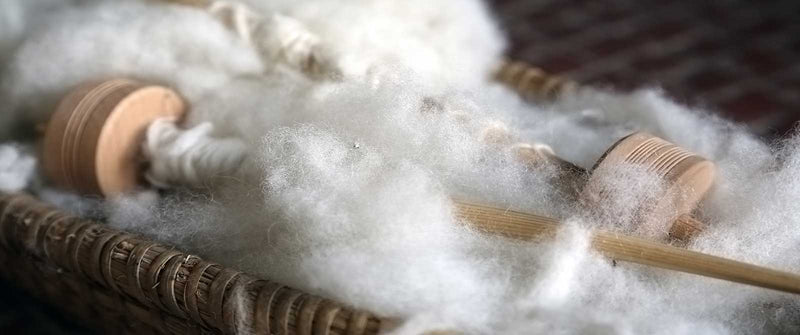Understanding the Various Kinds of Cashmere a Natural Fiber and Their Unique Advantages

The Beginnings of Cashmere: A Historical Review
While the extravagant touch of cashmere remains to charm modern-day customers, its origins map back to the harsh, chilly environments of Mongolia and the Mountain ranges. For centuries, the indigenous individuals of these areas have been increasing Capra Hircus goats, the prime resource of cashmere woollen. These goats, resilient against the serious winters, grew a fine undercoat to make it through, which later on came to be called cashmere. The name itself admires Kashmir, an area in India where the woollen was originally processed. Much of the early cashmere trade route was assisted in by the Silk Roadway, connecting Asia with the Middle East and Europe. Regardless of its worldwide spread, the finest cashmere is still thought to originate from the initial areas of Mongolia and the Mountain Ranges.

The Production Refine: From Goat to Garment
Shearing a Capra Hircus goat notes the inception of the complex cashmere manufacturing procedure. The resultant raw cashmere is then washed to eliminate contaminations such as vegetable, oil, and dust matter.
The clean fiber undergoes coloring, spinning, and weaving, or knitting, to transform it into a fabric. Complicated procedures such as quality control checks and finishing processes follow, guaranteeing the end product keeps the extravagant standard expected of cashmere. This painstaking process, from goat to garment, justifies the high cost attached to cashmere products, making them an icon of deluxe and improvement.
The Different Sorts Of Cashmere: An Extensive Analysis

The One-of-a-kind Benefits of Cashmere: Comfort and Sustainability
Relocating from the selection of cashmere kinds to the benefits they provide, comfort and sustainability stand out prominently. Cashmere, a natural fiber, is renowned for its unmatched soft qualities, giving a degree of convenience that artificial fibers can't match.
When it pertains to sustainability, cashmere is eco-friendly and eco-friendly, as it's harvested from cashmere goats who regrow their coats every year. what is cashmere. Unlike artificial fibers which can take centuries to decay, cashmere's influence on the atmosphere is marginal. This combination of convenience and sustainability makes cashmere an advantageous option for mindful customers

Taking Care Of Your Cashmere: Upkeep and Conservation Tips
While cashmere is undoubtedly a lasting and glamorous option, it calls for specific like keep its top quality and prolong its life expectancy. To start, cashmere should be hand cleaned making use of chilly water and a mild cleaning agent. Avoid website link turning or wringing the garment as it can harm the fibers. Instead, carefully squeeze out excess water and lay it flat on a towel to completely dry. Moreover, cashmere items need to be saved in a cool and dry area, away from direct sunshine and dampness. Utilizing moth repellents can safeguard these garments from possible damages. It's advisable to prevent hanging cashmere to stop extending. Instead, fold and store them correctly to preserve their form and top quality with time.
Investing in Cashmere: Understanding Its Value and Well Worth
Although cashmere might originally look like an expensive investment, its long-lasting value and worth ended up being noticeable when you consider its amazing high qualities. Understood for its unmatched soft qualities and heat, cashmere is a premium natural fiber that surpasses other products. Its high need and limited supply add to its high cost, but its durability guarantees it lasts for years, supplying exceptional value for cash. Cashmere pieces are timeless, typically ending up being treasures passed down via generations. what is cashmere. Its all-natural insulating properties provide heat without the bulk of artificial fibers. Purchasing cashmere, for that reason, is not simply regarding current style trends, yet regarding accepting a sustainable, durable, and lavish way of living.
Final Thought
In recap, the sort of cashmere one chooses, be it Mongolian, Chinese, or Italian, is dictated by private choices for heat, sustainability, deluxe, and spending plan. The worth of cashmere extends past its price, with comfort and longevity contributing to its well worth. Appropriate treatment and upkeep can ensure its conservation. For that reason, understanding the beginnings, production process, and distinct advantages of various kinds of cashmere can guide customers in their investment in this elegant natural fiber.
Whether it's the phenomenal heat of Mongolian cashmere, the affordability of Chinese cashmere, or the eco-conscious manufacturing of Italian cashmere, there's a tale to be discovered behind each fiber kind. Cashmere, a natural fiber, is renowned for its exceptional gentleness, offering a degree of convenience hop over to here that synthetic fibers can not match.When it comes to sustainability, cashmere is eco-friendly and sustainable, as it's collected from cashmere goats right here who regrow their coats annually. Known for its unrivaled soft qualities and heat, cashmere is a costs all-natural fiber that exceeds other materials. Comprehending the beginnings, manufacturing process, and one-of-a-kind advantages of different kinds of cashmere can assist customers in their financial investment in this extravagant all-natural fiber.